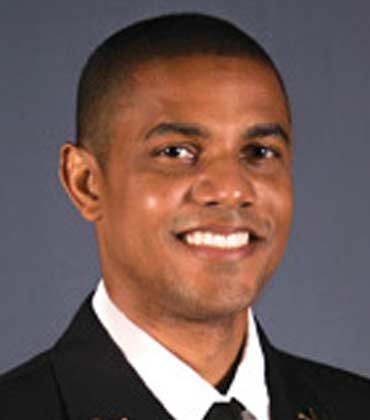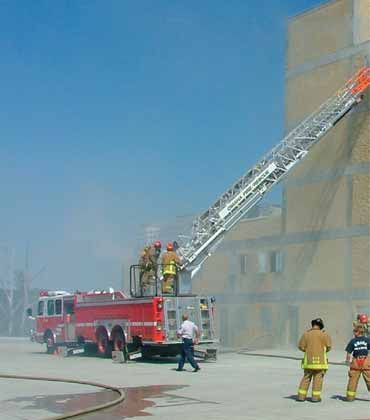Thank you for Subscribing to Gov Business Review Weekly Brief
Gov Business Review: Specials Magazine
The stunning yet harsh environment of the Alaskan Arctic often presents unique challenges for construction and infrastructure. However, a remarkable structure has stood the test of time in the small town of Kotzebue: the very first fire training tower constructed by WHP Trainingtowers™ in 1980. Today, almost 45 years later, the tower stands tall as a true testament to WHP’s promise of longevity and reliability. What an opportunity to speak with the leadership team at WHP Trainingtowers™ to learn about their business and how they have taken the industry by storm, setting the standard for product leadership, customer service, and innovation. This talented group of business leaders, firefighters, and engineers has grown from strength to strength over the last few years and is now looking to continue its rapid expansion to new customers throughout North America and beyond. “We believe that the training towers we build should last a lifetime—and they do. Add to all this quality and innovation a turnkey solution that helps you meet your department or district’s needs from budget to design to service after the sale, and you’ll see why we are the top choice for fire departments across the globe,” says Maggie Scaletty, President and CEO of WHP Trainingtowers™. The company’s fire training tower in Kotzebue is just one example of its training solutions expertise. Over the last four decades, WHP has garnered a longstanding reputation in the industry with a track record of over 1,000 successful projects completed. Today, WHP provides both fixed and modular training solutions that can be easily expanded to create diverse training scenarios for a more realistic experience. It is one of the few companies that handle the manufacturing and assembly of fixed fire training towers as a comprehensive general contractor. Holding contractor licenses in all required states across the US enables it to maintain full oversight and ensure top-notch quality throughout the entire process— from conception and manufacturing to installation and project completion. Enhancing Firefighter Training with Durability and Customization WHP stands at the forefront of the fire training industry, offering state-of-the-art fixed towers that are durable and fully customizable, up to seven stories. With a range of custom colors and façades, including stone, brick, and concrete, these towers are engineered to meet specific requirements, including seismic and wind load standards in all 50 states. The towers are renowned for their robust construction, built using a proven building system introduced in 1949, which WHP has continuously refined. The corrugated cladding, made of structural panels with 4.5” deep corrugations embedded with smaller corrugations, is a hallmark of its design. These panels, significantly thicker than those found in most commercially available metal buildings (at least 18 gauge), feature a ‘compound corrugation’ that substantially increases their strength. Complemented by a secondary framing system of 12-gauge steel columns, WHP’s towers can withstand the most stringent wind load and seismic requirements in the country without the need for structural modification. From hurricanes in Florida and Guam to tornadoes in North Dakota, the buildings have proven their resilience and durability. Furthermore, WHP’s training towers are fully modifiable to incorporate every training prop and option it offers. “As fire departments grow and evolve, so can our towers. They are designed to expand seamlessly, ensuring they meet the changing needs of communities,” says Rob Van Bibber, National Preconstruction Manager.
Taking a Methodical Three-Step Approach
Gunster Strategies is a privately owned leader in public affairs. Prioritizing client relationships, the team harnesses cutting-edge technology and global expertise to navigate complex legislative landscapes and deliver unparalleled results in their niche domain.
Providing Exceptional Customer Service
Trilogy Secured Services, LLC is a family owned and operated 8(a) company providing commercial and federal security systems to clients throughout the Washington D.C. Metropolitan area, and Hampton Roads area.
CXO INSIGHTS

Rising Out Of the Pandemic- Identifying the Challenges and Bridging the Gap Between Resources and Low To Moderate Income Families
Tanya Jones, Associate Vice President of Government Relations and Advocacy, HeartShare Human Services of New York

Advancements and Strategies in Government Emergency Management
Jevon Graham, MPA, CFO, MIFireE, Division Chief of Emergency Management, City of Clearwater

Addressing Human Trafficking Education for California Firefighters
Heather Marques, Division Chief, Alameda County Fire Department
IN FOCUS
Using Technology To Overcome Governance Challenges
Arising technologies play an important role in altering government tech startups.
Scaling New Heights: The Evolution and Impact of Firefighter Training Towers
Firefighter training towers are critical structures in the comprehensive training and development of firefighters.
EDITORIAL
Modern Firefighter Training Towers: Enhancing Realism and Safety
Firefighter training towers have long been integral to the rigorous training regimens designed to prepare firefighters for the unpredictable and dangerous nature of their work. As the demands on fire services evolve and the complexity of fire scenarios increases, these training facilities must keep pace with advancements in technology and safety protocols. Recent developments in firefighter training towers reflect a significant leap towards enhanced safety, realism, and effectiveness in preparing firefighters for their critical roles. One of the most notable advancements in firefighter training towers is the integration of advanced technology to create highly realistic training environments. Modern training towers are now equipped with sophisticated fire simulation systems that can replicate various fire scenarios, including structural fires, chemical spills, and vehicle fires. These simulations use computer-controlled fire props, smoke generators, and heat panels to create a controlled yet realistic training environment. The ability to simulate different fire behaviors and conditions helps trainees develop a deeper understanding of fire dynamics and improves their decision-making skills under pressure. The health and safety of firefighters during training have become paramount concerns, driving the development of training towers that minimize exposure to harmful substances. Modern training facilities are designed with advanced ventilation systems to reduce the accumulation of toxic smoke and contaminants. Additionally, the use of environmentally friendly, clean-burning fuels in fire simulations helps mitigate health risks associated with traditional training methods. These improvements not only protect trainees but also align with broader efforts to promote occupational health and safety within the fire service. In this edition, we have featured WHP Trainingtowers™/kjo. Over the last four decades, the company has garnered a longstanding reputation in the industry with a track record of over 1,000 successful projects completed. Today, it provides both fixed and modular training solutions that can be easily expanded upon to create diverse training scenarios for a more realistic experience.









